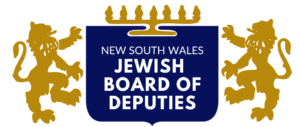
Carly Adno
The Australian Jewish News
June 1, 2023
A MOTION introduced by deputy Liberal leader Natalie Ward to commemorate Israel’s 75th anniversary passed the NSW lower house last week, but there was some expected backlash.
Ward was one of a host of politicians who attended last month’s Yom Ha’atzmaut function and, addressing members of NSW Parliament, she described the event as “a wonderful display of multiculturalism and bipartisan support for the Jewish state”.
“It was an honour to be in the presence of Holocaust survivors at the Independence Day celebration,” Ward said.
“Israel was born out of the horrors of the Holocaust as a safe haven for the innocent men, women and children who had experienced the most unthinkable atrocities known to man. Australia is home to the second-largest percentage of Holocaust survivors in the world; Israel is the only country with a larger percentage of survivors.
“I particularly acknowledge the chief executive officer of the NSW Jewish Board of Deputies, Mr Darren Bark … as well as the president, Mr David Ossip, for putting on the event and for the important work that they do in building harmony and fostering closer relations between all faith groups in NSW. We live in one of the most harmonious multicultural places in the world. It is thanks to organisations such as the NSW JBD that our state remains what it is today – an inclusive and cohesive place that welcomes people of all faiths, backgrounds and religious beliefs.”
Liberal MLC Chris Rath supported the motion, while reminding those who oppose the establishment of the State of Israel that it was created out of necessity following the “abomination of the Holocaust”.
“For centuries, the Jewish people were ostracised, despised and subject to the most abhorrent forms of ethnic cleansing known on the historical record,” Rath said.
“They had no physical homeland, nor any security of life or liberty. As the motion acknowledges, Israel has survived against the odds and is now a nation of free people. I emphasise that freedom. No state in the Middle East has done more for LGBTI rights, for racial and women’s equality and for other human rights than Israel. Undoubtedly, that truth disturbs those who would oppose the motion. They often choose to portray the Israeli state as a symbol of oppression.”
Abigail Boyd from the Greens and Labor’s Anthony D’Adam were vehemently against the motion, with Boyd claiming Israel “has used a raft of discriminatory planning and residency laws to shrink the Palestinian population that lives under Israeli occupation”.
“The Greens cannot support the celebration of the creation of an apartheid state,” she concluded.
D’Adam accused Ward of “provocation” in introducing the motion and said it was “disingenuous” to pretend otherwise.
“It is a provocation to the Palestinian people who live in my community and have suffered as a consequence of the establishment of the State of Israel,” D’Adam said.
“Knowing the controversy that surrounds the establishment of the State of Israel for that segment of our community, to move this motion is a provocation, and it is a very poor reflection on Natalie Ward’s position. It is essential that, in a discussion about Israel, the Palestinian perspective is put on record. Israel was established and Palestine was erased as a consequence of that.”
Ward retorted that the motion “has no underhanded purpose other than to recognise an event that was held”.
“I can absolutely be clear that it is not a provocation,” she said.
“It is a simple, straightforward motion to recognise a wonderful bipartisan event. Nonetheless, it is disappointing that the discussion has turned to divisive and negative territory.”
There was some Labor support for the motion, with Treasurer Daniel Mookhey saying, “NSW Labor supports a fair and just two-state solution, and we hope and pray that one day there will be two states living side by side in peace, harmony and economic prosperity.”




